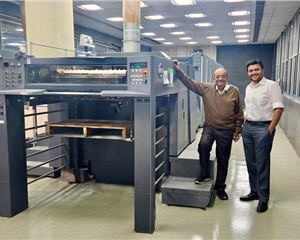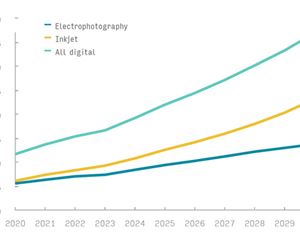RBI Monetary Museum: An intersection of economics and national storytelling
The Reserve Bank is entrusted to manage and meet the demand for currency, right from estimating the need using statistical models, indenting with presses, distribution logistics and arrangements, till the withdrawal of notes, and their destruction by shredding. Bazil Shaikh provides a glimpse into note-printing
22 Aug 2025 | By Sai Deepthi P
“Curating the RBI Monetary Museum was accidental,” recalls Bazil Shaikh, who headed the team that curated the RBI Monetary Museum. He was entrusted with the opportunity to conceive and envisage a museum for the RBI from scratch when he was a faculty member at the RBI’s staff college in Chennai. It was the then RBI Governor C Rangarajan who had revived the idea that the central bank should have a money museum. Shaikh was summoned from Chennai to Mumbai to flesh out, detail, and execute the initial ideas in the paper he had submitted. He reminisces this as “rare times in one’s life when ideas flow freely.”
The Reserve Bank Monetary Museum at Mumbai displays 2,500 years of India’s monetary heritage. On display are coins issued by various dynasties, banknotes issued by private and presidency banks as early as the 1820s, hundis from across the country and government bonds printed issued from Fort Williams in Calcutta (now Kolkata) in the early 19th century as well as by Princely States.
He had to envision a museum at a time when there were no precedents for establishing a museum in the Reserve Bank. His career as a central banker gave him the advantage of insights into the content that could be displayed, the stories around it, and the sensitivities involved. He says, “It allowed one to navigate the byzantine labyrinths of bureaucracy and through resistance to any work that meandered beyond the straight and narrow.”
Curating a museum was no easy task. Shaikh led a team that worked to showcase the story of money in India, right from how the idea of money evolved. He says, “The idea was to essentially depict about 2,600 years of India’s monetary heritage through coins, notes and other artifacts and to bring alive the multiple stories behind India’ monetary evolution.” To visualise a museum around the abstract concept of money, it was necessary to building an overarching thread to show how the idea of money has transited from the concrete to the abstract — coins which we could see and feel to symbolic paper notes that promised to pay the bearer the stated coins to fiat money — which is essentially an abstract unit of account that resides in computers and the minds of people.
The challenge was starting from scratch when there were no exhibits, no documentation, and little historical or strategic perspective. For instance, Hyderabad and Goa were assimilated into the Indian Union in 1948 and 1961. In the process, the Reserve Bank had withdrawn millions of Hyderabad and Goa notes and coins. The task was done so efficiently that not a single note or coin was available as samples when we sought exhibits for display.
Shaikh says, “We had to enlist the help of leading experts to list out what would fairly and authentically represent the different eras from punch-marked coins issued around the six-century BCE down to the latest series of coins and notes. Critical also to the project was a committed core team which he was exceedingly fortunate to have had.”
Dealing with red-tapism and bureaucracy came with its own set of challenges. Shaikh says, “Staid, narrow bankers, and the creative impulse of the idea of a museum don’t often go together. They make uneasy bedfellows. In bankers’ hierarchy of priorities, a museum is rock bottom.” Hence, the museum was positioned as a part of the Bank’s corporate communications and outreach efforts.
Evolution of printing in India
Shaikh’s book, The Conjuror’s Trick, traces the history of paper money in India, highlighting key technological advancements since independence. Early security features relied on wet offset printing, which incorporated watermarks, intricate guilloche patterns, rosettes, and microprinting for authentication. This method also allowed for rainbow tints, smooth color transitions that deterred counterfeiting while enhancing aesthetics.
A major milestone came in the 1940s with the introduction of a metallic security thread in 10 rupee notes to prevent forgery by the Japanese during World War II. Intaglio printing with tactile features was introduced in 1975. By the 1990s, advancements in reprographic techniques prompted new security measures, including optically variable inks, windowed security threads with microlettering, latent images, machine-readable features, electrotype watermarks, fluorescent fibers, and anti-copying mechanisms.
The 1960s, Shaikh notes, were a period when India’s development endeavours and two wars placed severe stress on India’s balance of payments. India’s foreign exchange reserves were strained by wars and developmental expenses, prompting a reduction in note sizes to cut costs. The establishment of the Security Paper Mill in Hoshangabad (1968) further reduced reliance on imports. In 2016, another resizing occurred post-demonetisation, aligning Indian notes with global standards and optimising ATM compatibility.
Did you know?
Indian notes were printed on paper imported from the Laverstoke Mills run by UK-based company Portals Paper. In 1968, the Security Paper Mill (SPM) was established in Hoshangabad (now Narmadapuram) in technical collaboration with Portals paper
A consignment of currency notes printed by Waterlow and Sons for the State of Hyderabad was on the SS Egypt bound from England to Mumbai. The ship encountered turbulent weather, collided with another ship and sank to a depth of over 400-feet off the coast of France. Ten years later, the consignment was salvaged and the notes were in excellent condition with the microprint clearly visible
The RBI Museum in Kolkata displays a 112-year-old hand-operated iron press once used for printing government bonds. The mechanical presses required manual typesetting, inking, and pressing—a labour-intensive process that persisted until 2016
When asked about the specific types of paper and methods used in currency notes to enhance durability and security, Shaikh explained that paper money is one of the most circulated and often mishandled items in the world.
Subjected to harsh weather conditions and rough use, lower-denomination notes tend to wear out faster than higher ones. To combat this, special varnishes are applied to extend their lifespan. Currently, high-denomination notes last an estimated five years, while lower-denomination notes remain in circulation for about two to three years.
From a printing technology perspective, Shaikh said that banknotes today involve a combination of offset and intaglio printing. “The evolution of security printing is a fascinating topic. The transition from monochrome printing of notes and their security features to two colours to multicoloured printing,” he says. Offset printing produces high-speed, multicolored backgrounds with intricate patterns, while intaglio creates the raised, tactile texture found on higher denominations.
Shaikh mentions, “The banknote paper nowadays itself is made of cotton linters, which gives it its unique touch, feel, and cackle (the crisp sound they make when they are handled), which marks it apart.” Forensic features are embedded during manufacturing to help distinguish genuine notes from counterfeits. The RBI typically updates note designs every decade to stay ahead of counterfeiters.
The substrate matter
Globally, many countries have transitioned from cotton-based paper to polymer substrates. India considered this shift in 2015, even conducting trials through Bharatiya Reserve Bank Note Mudran Private Ltd (BRBNMPL) and the Security Printing and Minting Corporation of India Ltd (SPMCIL). However, after demonetisation, the RBI halted further exploration of polymer notes. Shaikh suggests, “Perhaps it is felt that, given the digital push and investments in the paper mills, ink production, printing capacity in the run-up to the demonetisation, replacing the present paper currency ecosystem may involve too large a commitment of resources and energy.” While no official statement has been made, the focus remains on improving the durability of existing substrates.
Shaikh attests the opinion that India’s currency production now matches international benchmarks. While the country does not manufacture printing or verification machines, it has achieved self-sufficiency in note design and cost-effective production. With in-house paper manufacturing, India can embed unique forensic features into its currency. The sheer scale of production also positions India as a potential exporter of banknotes to other nations.
In conclusion
Bank notes are powerful cultural artefacts that reflect a nation’s ethos and identity. The motifs and symbols on notes have shifted over time, reflecting changing political, social, and economic aspirations. Post-independence, Indian banknotes played a crucial role in defining the young nation’s identity. Bazil Shaikh agrees that currency notes, due to their widespread circulation and intimate connection with users, serve as a unique medium of mass communication. They are among the most tangible representations of government authority that ordinary citizens interact with daily. However, designing banknotes presents a unique challenge for artists to balance aesthetic expression with practical constraints.
Shaikh’s own fascination with currency design stemmed from his immersion in conceptualising a new museum. His team came to the conclusion that currency notes stand at the intersection of economics, art, and national storytelling.
What the future holds - Quick Q&A
Sai Deepthi (SD): What do you make of the digital currency-paper currency battle?
Bazil Shaikh (BS): Given the popularity and ease of usage of the UPI (United Payments Interface) payments in India, the digital rupee has not gained traction. If in the future, the digital rupee gathers momentum, it could reduce the demand for physical currency but is unlikely to impact its size or design.
SD: How do you see the future of physical currency printing?
BS: Physical currency confers autonomy. It upholds the individual’s right to transact anonymously. This is intimately linked to individual freedoms. An overwhelming argument for retaining some existence of physical currency is that of building crisis resilience in the face of disasters such as technical failures, natural disasters, cyberattacks or war where physical cash has an undisputed edge as a backup for transactions. So, chances are that while the aura of banknotes may diminish, they will not be entirely relegated to museums in the near future.
SD: Will environmental considerations impact currency printing techniques?
BS: The paper used for the currency substrate is made predominantly from cotton lintels. Hence, felling of trees or forest cover is not impacted. Notes were earlier incinerated; this practice has been discontinued in favour of shredding. The briquettes are often recycled into other uses such as manufacture of soft and hard boards as well as landfills. The concerns have been largely taken care of, and concerns of ink residues are being addressed.
Read the complete feature in the August isse of PrintWeek












 See All
See All